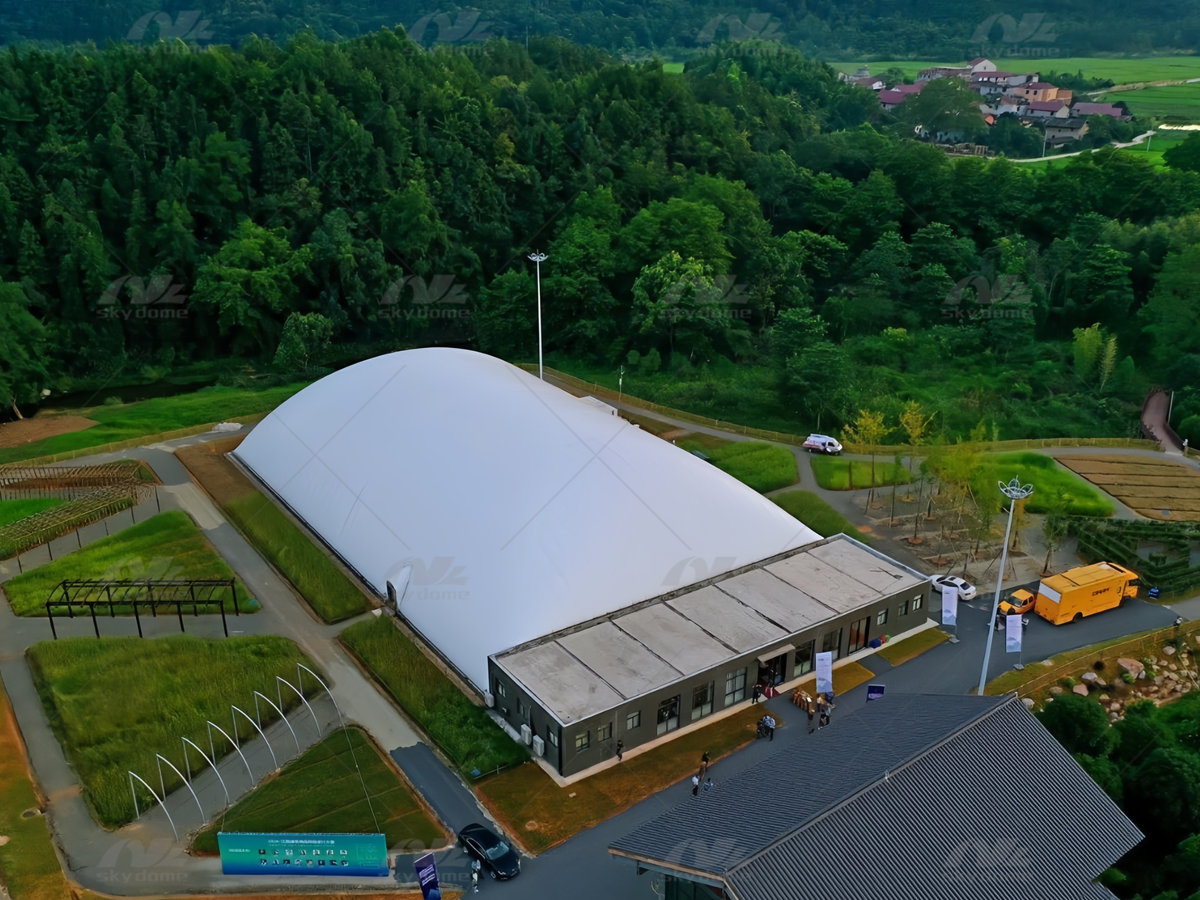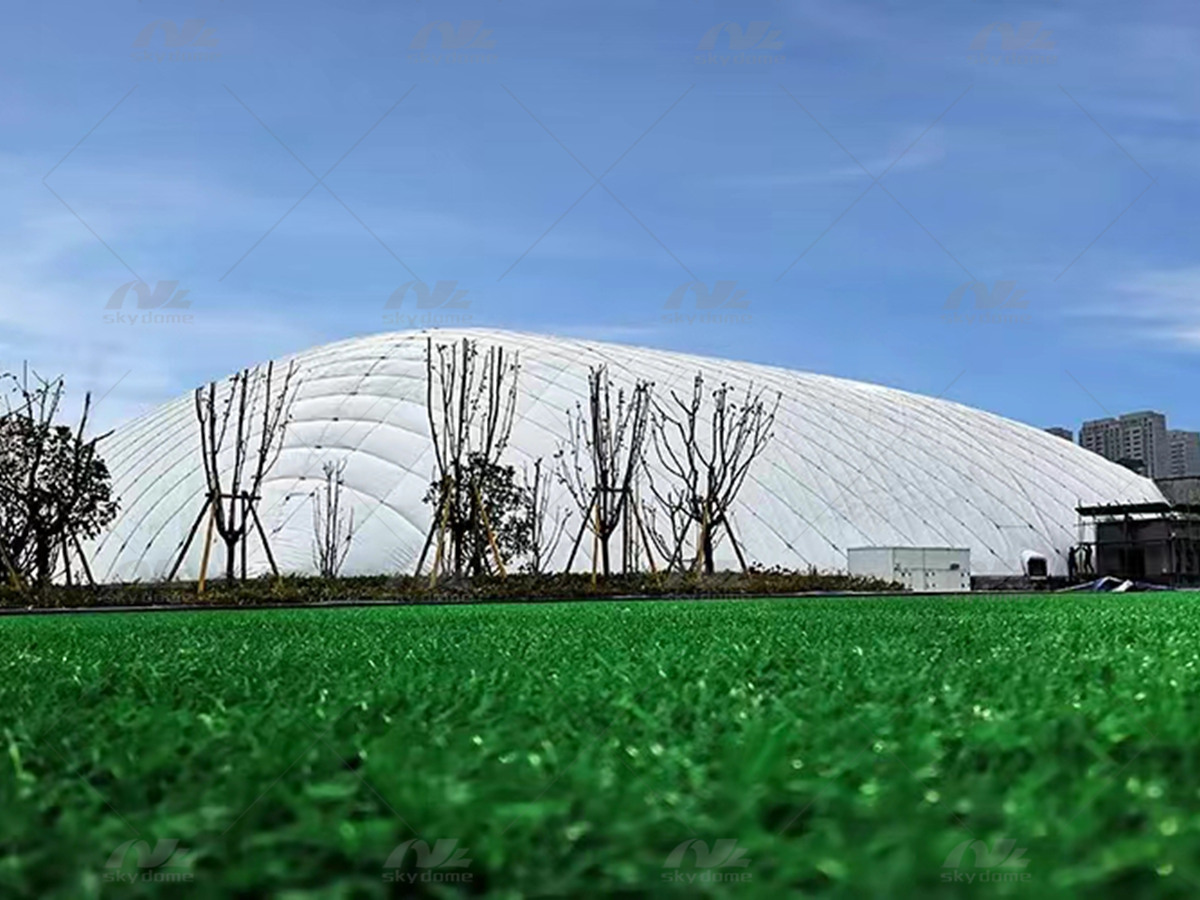
Air domes are revolutionizing the way we think about sports facilities. These inflatable structures, made from high-strength fabric and supported by air pressure, offer a unique combination of versatility, cost-effectiveness, and environmental sustainability. They provide a year-round solution for various sports, from football and basketball to tennis and athletics, accommodating both professional and recreational use. The ability to quickly deploy and relocate these domes makes them ideal for temporary events or permanent installations in regions with extreme weather conditions. As the demand for flexible and multifunctional sports venues grows, air domes are becoming an increasingly popular choice for clubs, schools, and municipalities worldwide.

Features of Air Domes
Air domes, also known as inflatable sports halls, are gaining popularity in the world of multi-sports stadiums due to their unique features and benefits. These structures are designed to be highly versatile, accommodating a wide range of sports activities under one roof. The key feature of air domes is their ability to maintain a controlled environment, regardless of the weather conditions outside. This is achieved through a robust air-supported system that ensures the dome remains inflated and stable, providing a safe and comfortable space for athletes and spectators alike.
One of the most significant advantages of air domes is their energy efficiency. These structures are typically equipped with advanced insulation materials and energy-saving technologies, which help to reduce heating and cooling costs. Moreover, the air pressure system used in these domes can be easily adjusted to accommodate different sports requirements, ensuring optimal playing conditions at all times. Additionally, air domes are designed to be durable and long-lasting, with high-quality fabrics and reinforced seams that can withstand the rigors of constant use.
Another notable feature of air domes is their quick installation and ease of maintenance. Unlike traditional sports facilities, which can take months or even years to build, air domes can be erected in a matter of weeks, making them an ideal solution for temporary or permanent venues. The maintenance of these structures is also relatively simple, as the air-supported system requires minimal intervention and the fabrics used are resistant to wear and tear. Furthermore, air domes can be easily relocated or expanded, providing a flexible and cost-effective option for sports organizations looking to adapt to changing needs and demands.
In addition to their functional benefits, air domes also offer a unique aesthetic appeal. The inflatable design allows for creative and innovative architectural solutions, which can be tailored to suit the specific requirements of each sports facility. This versatility extends to the interior layout as well, with customizable floor plans and modular components that can be easily reconfigured to accommodate different sports activities. As a result, air domes are not only practical and efficient but also visually striking, making them a popular choice for sports venues around the world.

Benefits of Air Domes for Multi-Sports
Air domes offer a range of benefits for multi-sports facilities, making them an increasingly popular choice for sports organizations and clubs worldwide. One of the most significant advantages of air domes is their versatility. These inflatable structures can accommodate a wide variety of sports, from traditional team sports like football and basketball to individual activities such as tennis and athletics. The ability to host multiple sports under one roof allows sports organizations to maximize their investment and cater to a broader range of interests within their community.
Another key benefit of air domes is their cost-effectiveness. Compared to traditional sports facilities, air domes are generally more affordable to construct and maintain. The materials used in their construction are often less expensive, and the installation process is quicker and more efficient. Additionally, air domes can be easily expanded or modified to accommodate changing needs, reducing the need for costly renovations or new constructions. This flexibility and cost savings make air domes an attractive option for organizations with limited budgets or those looking to make the most of their resources.
Air domes also provide a controlled environment for sports activities, which is particularly important for regions with extreme weather conditions. The air-supported structure helps to regulate temperature and humidity levels, ensuring optimal playing conditions for athletes and minimizing the risk of weather-related disruptions. This climate control feature not only enhances the comfort and performance of athletes but also extends the usability of the facility throughout the year. Whether it’s a hot summer day or a chilly winter evening, athletes can train and compete in a safe and comfortable environment.
In addition to these practical benefits, air domes also offer a unique aesthetic appeal that can enhance the overall experience for athletes and spectators alike. The inflatable design allows for creative and innovative architectural solutions, resulting in visually striking structures that stand out from traditional sports facilities. This modern and futuristic look can help to attract more visitors and participants, boosting engagement and generating additional revenue for sports organizations. Moreover, the ability to customize the interior layout and design of air domes further enhances their appeal, as organizations can tailor the space to their specific needs and preferences.
Overall, air domes provide a range of benefits for multi-sports facilities, making them an increasingly popular choice for sports organizations and clubs worldwide. Their versatility, cost-effectiveness, climate control features, and aesthetic appeal make them an attractive option for organizations looking to create flexible, efficient, and visually striking sports venues that cater to a wide range of activities and interests.
Applications of Air Domes
Air domes have found their way into various sports applications, proving to be a versatile solution for different types of facilities. One of the most common uses is for indoor football pitches, where the air dome provides a controlled environment for training and matches. The inflated structure allows for year-round play, regardless of weather conditions, and can be easily adapted to accommodate other sports as well. Basketball courts, tennis arenas, and athletics tracks are just a few examples of how air domes can be repurposed to meet the needs of different sports disciplines.
In addition to traditional sports, air domes are also being used for recreational activities such as skateboarding and BMX biking. The smooth, uninterrupted surface of the dome provides a safe and controlled environment for extreme sports enthusiasts to practice their skills. This has led to the development of specialized air dome designs that prioritize safety and durability, while still offering the flexibility to host various sports events.
Air domes are not limited to sports facilities; they are also being used for temporary events such as concerts and exhibitions. The ability to quickly and easily erect an air dome makes it an attractive option for event organizers who need a flexible and cost-effective venue. The inflated structure can be customized with branding and lighting, creating a unique atmosphere for any event. Additionally, air domes can be equipped with climate control systems to ensure the comfort of attendees, regardless of the season.
Another interesting application of air domes is in the field of education. Schools and universities are increasingly turning to air domes as a solution for their sports facilities. The cost-effectiveness and versatility of these structures make them an ideal choice for institutions with limited budgets. Air domes can be used for a variety of sports, from football and basketball to gymnastics and track and field. They also provide a safe and controlled environment for students to participate in physical education classes and extracurricular activities.

Conclusion
Air domes have proven to be a versatile and cost-effective solution for multi-sports facilities. Their ability to accommodate a wide range of sports, from traditional team sports to recreational activities and even educational purposes, makes them an attractive option for sports organizations, schools, and event organizers alike. The quick installation, climate control features, and aesthetic appeal of air domes further enhance their value, providing a flexible and efficient space for athletes and spectators. As the demand for innovative and multifunctional sports venues continues to grow, air domes are likely to play an increasingly important role in shaping the future of sports facilities.



















